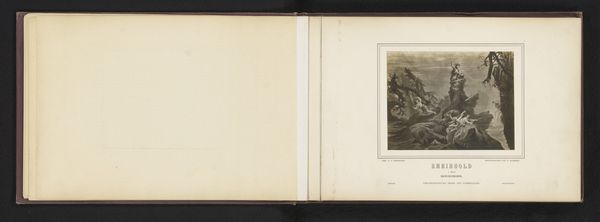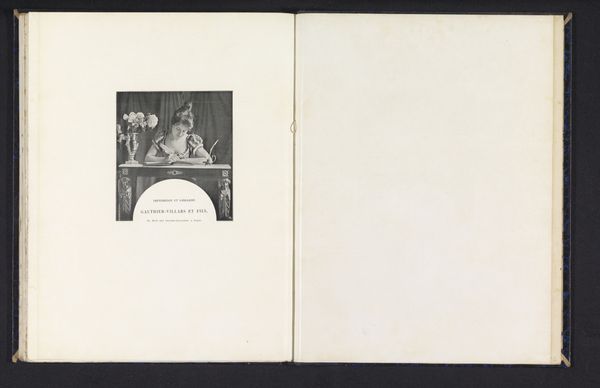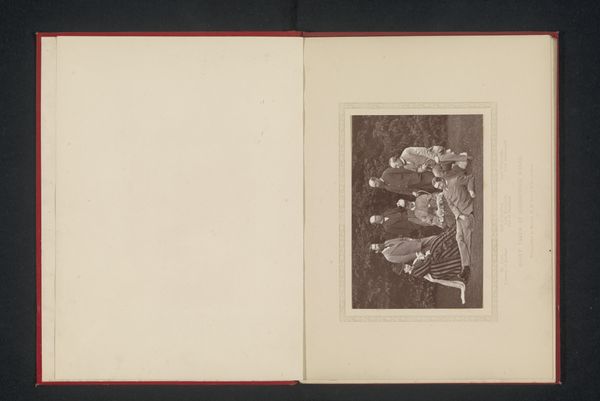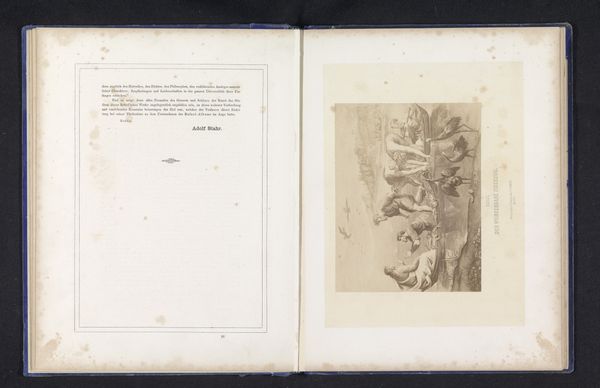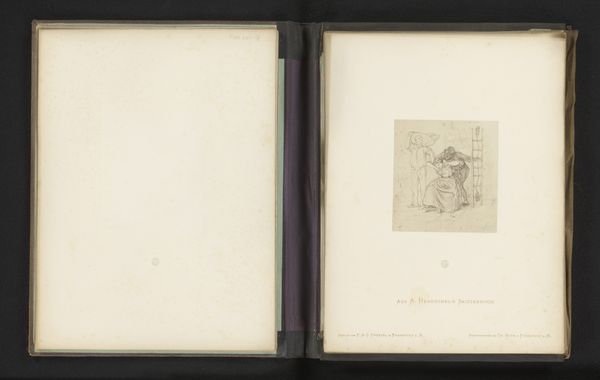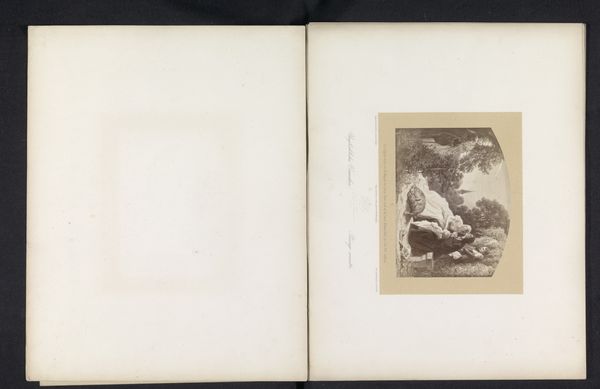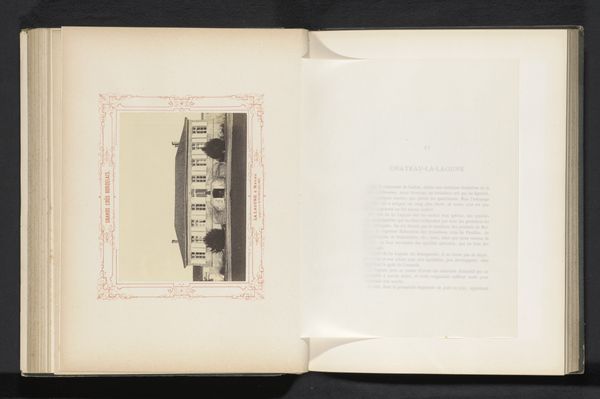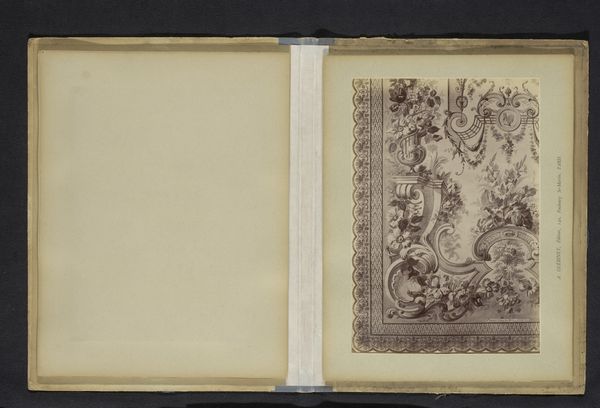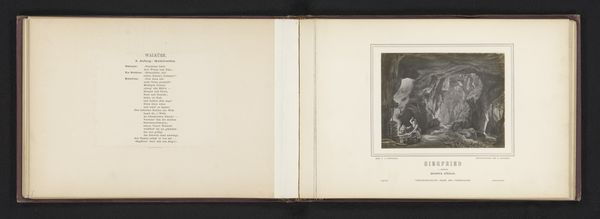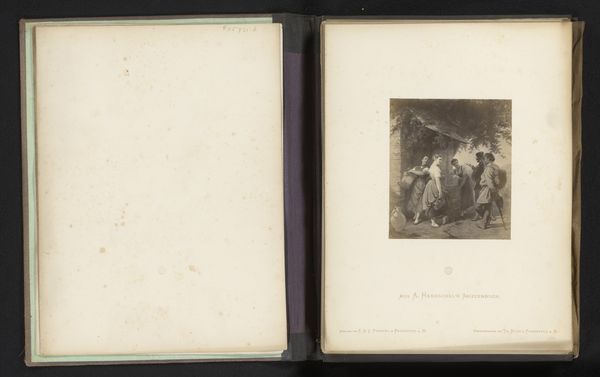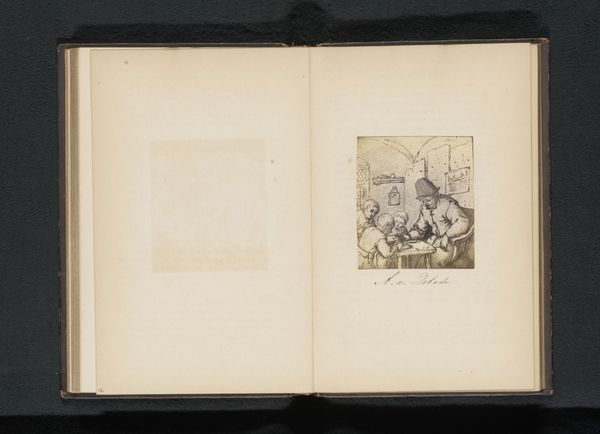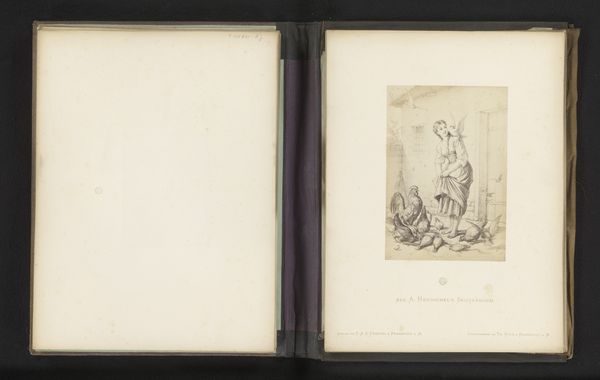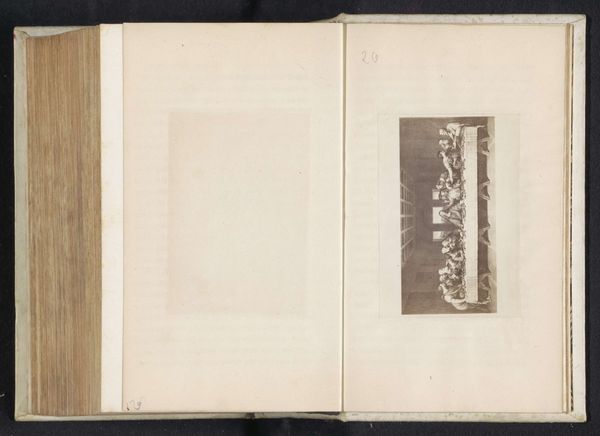
Reproductie van een ontwerp van Cardinal and Theological Virtues door Raphael before 1892
0:00
0:00
drawing, graphic-art, print, paper
#
drawing
#
graphic-art
#
aged paper
#
homemade paper
# print
#
sketch book
#
personal journal design
#
paper
#
personal sketchbook
#
folded paper
#
sketchbook drawing
#
history-painting
#
paper medium
#
italian-renaissance
#
sketchbook art
#
design on paper
Dimensions: height 66 mm, width 127 mm
Copyright: Rijks Museum: Open Domain
Curator: Here we have "Reproductie van een ontwerp van Cardinal and Theological Virtues door Raphael," which translates to a reproduction of a design by Raphael, dating back to before 1892. It is rendered as a print, preserved within what appears to be a personal sketchbook or journal. Editor: What strikes me is the sense of fragility. The paper looks so aged and delicate, and there's a vulnerability to seeing a masterwork filtered through the intimacy of a sketchbook. It’s like catching a glimpse into the private reverence of another artist. Curator: Indeed. The artwork's existence as a reproduction is quite significant, too. This print serves as an index of the high Renaissance ideals of Raphael circulating well beyond the elite circles of patrons. Its location in a sketchbook situates it in relation to the more quotidian practices of art making. Editor: I get a feeling of apprenticeship somehow. It reminds me of students copying master works to learn technique, form. Curator: Precisely. These kinds of reproductions made artworks far more accessible as learning resources. Before the age of photography, this kind of graphic art print would have been instrumental in shaping visual knowledge. Editor: Looking closer, I can appreciate how much detail the original artist tried to capture even within the printmaking process, trying to match textures. Does the work within it suggest much about art education in the time period? Curator: In some ways. The subject matter would emphasize a belief in classical sources for proportion and ideal forms, and to study how the 'masters' understood narrative composition through religious allegories and forms of patronage. Editor: It all adds a beautiful layer of history and dedication, from the original artist all the way down to whoever meticulously copied the drawing in their sketchbook. This art whispers stories of how people valued these Renaissance artworks. Curator: And its very existence pushes us to re-evaluate the impact those older artworks have had on social structures, and that is one great way art may still offer important insight for us all today.
Comments
No comments
Be the first to comment and join the conversation on the ultimate creative platform.
